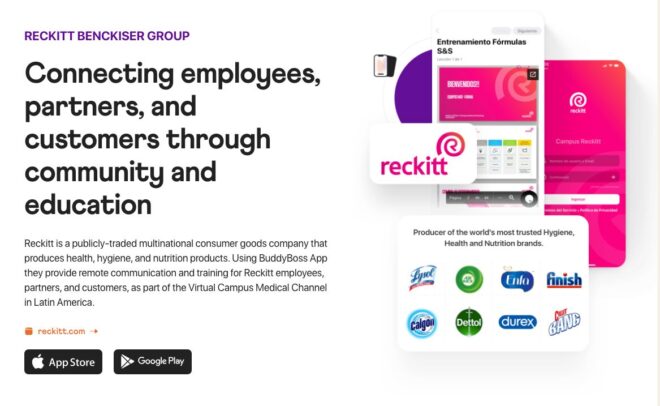Social media was initially created to connect, communicate, and relay information. But with social media growing overpopulated with a sea of content and users, many businesses today opt to maintain a separate online community to improve sales and customer relationships.
Having an online community means you need to know how to deal with your customers especially those who are premium users. So this blog will share tips on how you can interact with your online community when using an online community management system.
What is a Community Management System?
A Community Management System (CMS) is software that helps build, manage, and grow online communities. It offers tools for organizations or groups to interact with members or customers in an organized online space.
The main aim is to create a sense of belonging, boost participation, and support communication and teamwork.
In addition, a CMS is useful for bringing online traffic and recurring revenues. However, there are more benefits to having a CMS.
What to know more?
The next section describes the benefits of having an online community.
What are the Advantages of an Online Community Management System?

Enhanced Engagement
Having an online community will boost the quality of engagement with your audience. This is because it encourages active participation as well as interaction with yourself and amongst your members.
One can easily address specific needs when there is an online community. In terms of engagement, it is far quicker to keep members engaged with offers, campaigns, and updates.
Although many niches maintain their online community for their followers and customers, tech companies make heavy use of maintaining a community feature as it helps to quickly respond to alerts from customers who report an issue with a product or service.
Customer Support and Feedback
With a community, you are guaranteed to experience quality feedback from your customers. Many new inventions need proper feedback from their customers. If you have a membership community, you can directly request them to provide feedback.
This is a much more practical approach than asking a user to fill out a form to provide feedback.
At the same time, members also experience quality feedback from the customer support team. The communication is more direct between the organization and the individual member.
For example, if a user does not know how to use a product then a video or blog can be shared with the user directly. This is faster than formally posting a ticket to lodge an issue.
Brand Loyalty and Advocacy
Another benefit of a membership community is the ability to uplift brand loyalty by nurturing a sense of community, leading to satisfied members who often evolve into enthusiastic brand supporters.
In the long -run, if a community can maintain quality engagement with its members there will be a sense of loyalty. This means customers will be satisfied with the business and will want to remain with the business.
Having happy members will mean members will recommend you to other people by sharing affiliate links. Many businesses that are successful with their products create affiliate links so happy members can make use of the links by promoting them on social media.
This strategy leads to more sales and more members joining the community.
Cost-Effective Marketing
Maintaining a membership community means the cost of your marketing efforts will be efficient. If members are advocating for your products and continuously take advantage of your promotional offers then you make more out of your membership community.
Most businesses use paid ads to promote their products and services. But if you have a membership community, then you can be confident that all your costs will covered as you already have a large community who are most likely to buy your products when you launch your campaigns.
SEO Benefits
Content creation today is vital for bringing traffic to your business. However, those without a membership community have to work harder to optimize their SEO efforts. They must continuously create new content to remain competitive in the search engine.
However, those who maintain an online community are guaranteed to receive returning traffic. Since content will be shared in the group, there will be additional traffic coming from users who are already interested in the business.
There are times when new content may not be created for various reasons. Content creation can be quite exhausting. It is not unusual when a creator is exhausted or needs to take a break. However, the SEO efforts should not be halted. In such a case, old content can be reposted in the community for continuous traffic.
If the content is of important quality, then reposting and resharing may lead to sales.
We have a full blog post on How to Increase Blog Traffic with Less Content so be sure to check it out if you are looking to maximize your SEO efforts with a membership community.
Scalability
Maintaining a membership plays a huge role in increasing a business’s customer base. Provided the business can maintain the membership quality, the business is guaranteed to grow faster than predicted.
But what are the principles of maintaining a community for scalability? Well, the following is what one has to keep in mind when maintaining an online community.
What are the 4 pillars of Community Management?

You do not have to manage your online community. Keep in mind you will be able to shine better when you involve a community manager. Anyone who has dealt with sales or directly with customers is perfect for managing members.
But if you are starting small and plan to manage your community on your own then here are some points you need to keep in mind when playing the role of a community manager.
Engagement
Engagement does not refer to just sharing content or promotional offers. It also means being active in interacting with community members through conversations and answering queries. You may sometimes need to make an effort to encourage participation, foster a welcoming environment, and build relationships with and among members.
Other engagement activities can include:
- Organizing events
- AMAs (Ask Me Anything sessions)
- Contests
- Discussions around relevant topics
Growth
Growth for your community will involve strategies such as reaching potential new members, partnerships, other communities, and brands. If you have a content team then you will need to keep in touch with them to ensure you have fresh content to post in your community. You may even need to provide feedback on the content they produce.
Growth efforts should aim at deepening the engagement and loyalty of existing members so that the community remains vibrant and interactive over time.
Listening
Although you will be the owner of your membership community, you will be expected to listen to the wants and needs of your members. This means you will need to put your ego aside.
And if a member is a premium customer then there is no question about listening to their frustration. Addressing these issues will mean you will have to reach out to your colleagues to solve the issue. Perhaps even collaborate with a different department if your business is large.
It is not uncommon for members to NOT share your quick response. But as long as you can maintain your membership’s satisfaction, you will always be on the advantageous side.
Moderation
Whether or not your members are paid or not does not mean you can ignore toxic behaviors from your audience. I have seen members try to take advantage of a successful community by sharing their business’s content to drive traffic to their business.
This is not acceptable as this will mean your members will be distracted from the purpose of your community. You may consider this if a member seeks your permission but you must not allow members to do anything that will result in a fall in the number of users.
Also, members must not ever show disrespect or express themselves offensively. You can warn them about their behavior or slap them with a suspension. But be prepared to ban members if they cross the line.
To make moderation easy, you can set guidelines when users join your group. If you are using the BuddyBoss platform then your community website will automatically flag any offensive words and alert you when members are not respectful.
These pillars are all interdependent with each other as they contribute to the overall health and success of the community. Effective community management requires a balance between these areas as the community evolves and its needs change.
Keep in mind more qualities are important to community management such as Improvement and Support.
Tips on Engaging with an Online Community

1. Know Your Audience
The first tip is to know your audience. The way you engage with your audience will depend on the profile of your audience.
If your business is for selling courses or educating users on a particular niche then your membership community will likely expect a standard level of professionalism while also engaging with your members.
THE HAGIOS STUDY is a community that teaches the Bible to its members. Therefore, maintaining professionalism is important for such a community. The community was built by using the BuddyBoss platform. Kristina Romero who is the founder of the Hagios Study also requested a custom-made mobile app so that users can access lessons from their phones.

So be clear on who your audience is as it will help you to plan on how to engage with your audience.
2. Create Valuable Content
Content sharing is going to be the main way to engage with your audience when other promotional offers are not going on. The content you can share can be informative, and entertaining which is relevant to your audience.
This can be in the form of articles, videos, infographics, and podcasts to cater to different preferences.
Having a team of content creators such as writers and video creators will fule you create a constant supply of media to keep members entertained or informed.
3. Recognize and Reward Active Members
Have you thought about recognizing your members for their contributions? You can do this by giving shout-outs, featuring member spotlights, or offering rewards for active participation.
Before Google Translate came into view, I remember a WordPress company offering 1 year of free subscription to anyone who could translate their plugin into other foreign languages.
Additionally, you can introduce a badge or points system that can gamify the engagement process, providing a fun and competitive element that acknowledges and incentivizes active participants.
Some companies post an update on their social media channel highlighting customers who have been with the company for a long time.
These approaches not only foster a sense of belonging and appreciation among members but also encourage ongoing interaction and contribution, ultimately strengthening the community bond.
4. Utilize a Proper Online Community Management System
Utilizing a proper online community management system helps with managing many users on a platform. With it, you will be able to manage and foster a thriving online community. Such systems provide a centralized platform for executing key community management tasks—ranging from content moderation and member engagement to analytics and feedback collection.
This will not only enhance the user experience but also allow informed decision-making and strategy adjustments to meet the community’s evolving needs.
FAQ on Online Community Management System

1. Do I need to moderate my Community?
Yes! You must moderate your community. There are times when members are rude to other members.
You do need to ensure your community has a system to filter any offensive words or engagement. Fortunately, online membership platforms today have an automated system that removes or hides offensive comments.
Your job will be made easier if you set the rules of your community. This will prevent members from crossing the line.
2. How do I plan with an online community system?
Planning for a community involves establishing clear objectives, identifying the target audience, and setting guidelines for how the community should operate.
Remember to plan the types of content and activities that will drive engagement and achieve the community’s goals. If it is within your budget, you can hire a community manager to fully plan for your community.
3. What types of content can I share in the community?
Anything! Here is a short to give you an idea of how you can keep your community interesting for your members.
- Discussions and Q&A: Foster conversation and knowledge sharing by posting a status and encouraging members to share their views.
- Articles and Blogs: Share insights, news, updates, and detailed information.
- Videos and Webinars: Offer visual and interactive content for users to learn more.
- Polls and Surveys: Gather opinions and feedback to improve your services.
- Events and Meetups: Promote community gatherings, online or offline.
- Photos and Infographics: Use visual storytelling to engage members.
- Tutorials and How-to Guides: Provide valuable, actionable content.
- User-Generated Content: Encourage members to share their own stories or creations.
4. Is there a mobile app available for a CMS?
Certainly! You need to also have a dedicated mobile app so your members will be connected to your community anywhere and anytime.
If you are looking to customize your mobile app then contact BuddyBoss to have your mobile app ready. The app is built and maintained by BuddyBoss while you take care to focus on your community.
The image below is an example of a mobile app built for the Reckitt Benckiser Group. It is a British multinational consumer goods company that uses a mobile app to connect better with its employees and customers.

5. Where can I learn more about managing an online community?
You can find out more about managing your membership community through YouTube and Documentation.
And if you are an avid reader, why not check out blogs on how you can use your online community to grow your business?
At BuddyBoss we also have a dedicated support team and our own webinars that we hold to support our users on how to make the best use out of your online community.
Conclusion
Having an online community means dealing with people who are using your product or service. It involves nurturing them through communication, content sharing, problem-solving and so much more.
Once you start to see success with your community, it is important to switch to using a professional platform so you can cater to a larger audience.
By using the BuddyBoss platform, you will be able to create more groups and see the analytics of your user’s engagement activities.
This will help you grow your community effortlessly while keeping your members satisfied with your business’s products or services.







